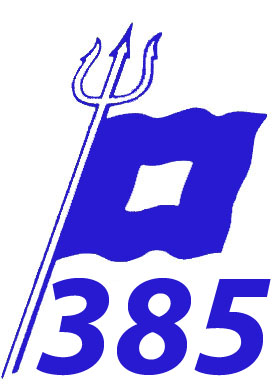PHRF Ratings for the P-385 (~ 180)
- Vary according to various clubs around the country.
- These are the values that I found on the web
- I personally think that the 180 rating is on the high side.
- My friend just bought a Bristol 38.8 and initial racing between his boat and my P-385 make these boats appear to perform in a similar manner. We both have centerboards, similar hull designs, yet his rating is only 126! We will continue to race/cruise against each other and it will be interesting to see where the Bristol really outperforms my P-385. I believe that he has the faster boat- but have yet to see any huge differences.
- 180 – Dan Pfeiffer’s Web page (Pearson PHRF Ratings.pdf)
- 180 – North Carolina PHRF (NCPHRF.pdf)
- 174 – North Carolina source (NCPHRF.pdf)
- 208 – Texas, rated for Non-Spin class: (Galveston Bay)
Technical Specifications on the P-385 from Carl’s Sail Calculator:
- LOA: 37.03 LWL: 29.68 Beam: 11.45 Displacement: 19908 Sail Area: 599
Derived Quantities:
- Displacement to LWL: 340 (300 = Heavy Cruising Boat)
- Hull Speed: 7.3 (I have seen sustained speeds of over 8 knots in perfect conditions, surfing at 9.9)
- Sail Area to Displacement: 13.05 (Just above a motorsailer)
- LWL to Beam: 2.59 (Just below medium)
- Motion Comfort: 37.22 (Range is 5 – 60, higher number = more comfortable)
- Capsize Ratio: 1.69 (Less than 2 is considered to be relatively safe in bad conditions)
- Sailing Category: Cruiser Pounds/Inch: 1214
What do these values mean?
Displacement to LWL: A medium value would be 200. 300 would be high (Heavy Cruising Boat) and 100 would be low (Ultra Light Displacement- ULDB). Boats with low numbers are probably uncomfortable and difficult to sail.
Hull Speed: This is the maximum speed of a displacement hull. Some racers and lighter boats are able to achieve greater speed by lifting over the bow wave and riding on top of the water, that is, planing.
Sail Area to Displacement: The sail areas is the total of the main sail and the area of the front triangle. I cannot be sure that this datum water entered correctly for each listed boat. A racing boat typically has large sail area and low displacement. A number less than 13 probably indicates that the boat is a motorsailer. High performance boats would be around 18 or higher.
LWL to Beam: A medium value would be 2.7. 3.0 would be high and 2.3 would be low.
Motion Comfort: Range will be from 5 to +60 with a Whitby 42 in the mid 30’s The higher the number the more comfort in a sea. This figure of merit was developed by the Yacht designer Ted Brewer and is meant to compare the motion and comfort of boats of similar size and types.
Capsize Ratio: A value less than 2 is considered to be relatively good; the boat should be relatively safe in bad conditions. The higher the number above 2 the more vulnerable the boat. This is just a rough figure of merit and controversial as to its use.
Pounds per Inch Immersion: The weight required to sink the yacht by one inch. If the boat is in fresh water multiply the result by 0.975. If you know the beam at the waterline (BWL) multiply the result by BWL/Beam.

